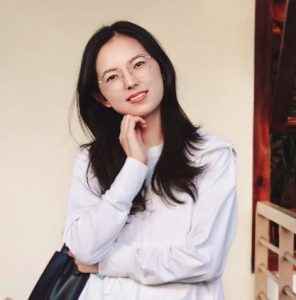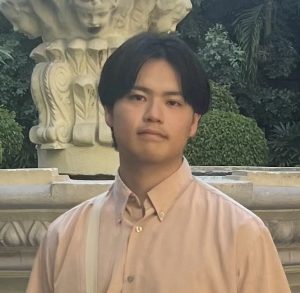Three early career researchers recognized for their outstanding contributions to materials science
MELVILLE, N.Y., Jan. 28, 2025 — AIP Publishing is delighted to announce the winners of the 2024 APL Materials Excellence in Research Award, an honor bestowed upon young researchers who publish exceptional work in APL Materials.

The first-place prize of $5,000 was awarded to Yunnan University’s Pengyan Luan for her paper, Hysteresis Erasure in ZIF-8@ZnO Nanorod Array Field-Effect Transistors through Oxygen Chemisorption-Induced Depolarization, published in January 2024.
In the paper, Pengyan’s team investigated the electrical properties of zeolitic imidazolate framework-8 (ZIF-8), a promising framework for use in solid-state electronics and circuit components that hasn’t yet realized its potential. After fabricating ZIF-8-based field-effect transistors (FETs), the team noted “significant hysteresis behavior” — but found that depolarizing the ZIF-8 by annealing the air and promoting chemisorption of oxygen halts the behavior. Through this work, the team demonstrated ZIF-8’s potential uses in FETs, nonvolatile memories, and gas sensors.
“Winning the 2024 APL Materials Excellence in Research Award’s first-place prize marks a significant milestone for both my research team and me,” said Pengyan, who received her bachelor’s degree from Tianjin Normal University in 2021 and her master’s degree from Yunnan University in June of this past year.
“It also signifies the recognition of our dedicated efforts in investigating the applications of metal-organic frameworks in electronic devices,” she added. “This award will serve as a powerful catalyst, motivating us to continue striving for excellence in our research endeavors. Thank you, and congratulations to all the winners!”

The second-place prize of $2,500 went to Peiyu Yan, a PhD candidate in the Department of Dermatology at China-Japan Union Hospital of Jilin University, for her and her team’s April 2024 paper, Methacrylated Gelatin Hydrogel Conjugated with ε-Polylysine and Enriched with Platelet-Rich Plasma for Chronically Infected Wounds.
In the paper, Peiyu’s team introduced a natural antimicrobial poly amino acid, ε-polylysine (ε-PL), and platelet-rich plasma (PRP) to gelatin methacrylate, creating a hydrogel that not only exhibited improved mechanical strength and antimicrobial capacity but also released diverse growth factors — all of which aided in cell growth and infection prevention. The team notes this work ultimately demonstrates “a promising hydrogel dressing for the treatment of chronically infected wounds.”
“First and foremost, I am thrilled my efforts have been acknowledged,” said Peiyu. “Second, I’ll have greater guts going forward to follow my own desires and moral convictions. Lastly, this award has allowed me to broaden my research direction.”

The third-place prize, a waived article processing charge on one 2026 APL Materials publication, went to Ryotaro Hayasaka, a PhD student in the Department of Chemistry at the Graduate School of Science at Tohoku University, for his paper, Common anion rule in oxide heterointerfaces: Experimental verification by in situ photoemission spectroscopy.
In the paper, Hayasaka’s team established guidelines for the design and control of functionalities in oxide nanostructures. According to the team, a lack of guidance on the subject had proven limiting, as “band alignment at the interface is one of the fundamental parameters for designing electronic devices and artificial functional materials.” To establish that guidance, the team investigated the common anion rule-based Zhong/Hansmann scheme, first introduced in 2017. They found the scheme accurately predicts charge transfer from overlayer films to SrTiO3 in prototypical heterointerfaces — “indicating that the presence or absence, as well as the sign and amount, of interfacial charge transfer is predicted by this scheme.”
Hayasaka described himself as “very proud” to have received the award, and thankful for the recognition of his impact.
“It gives me confidence that my research is going in the right direction and is meaningful to the scientific community,” he said. “It has also motivated me to conduct even more challenging research. I will continue to do my best to contribute as much as I can to the scientific community.”
The winning papers were selected by an award committee consisting of APL Materials Editorial Advisory Board members.
APL Materials and AIP Publishing are proud to support early career researchers with the APL Materials Excellence in Research Award. Entries for the 2025 award are now being accepted. Eligibility and other details are available on the APL Materials website.
###
About APL Materials
APL Materials is an open access journal that features original research on significant topical issues within all areas of materials science.
About AIP Publishing
AIP Publishing’s mission is to advance, promote, and serve the physical sciences for the benefit of humanity by breaking barriers to open, equitable research communication and empowering researchers to accelerate global progress. AIP Publishing is a wholly owned not-for-profit subsidiary of the American Institute of Physics (AIP) and supports the charitable, scientific, and educational purposes of AIP through scholarly publishing activities on its behalf and on behalf of our publishing partners.
###
Contact:
Rob Press
Communications Manager
rpress@aip.org
